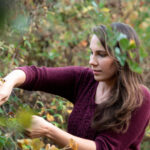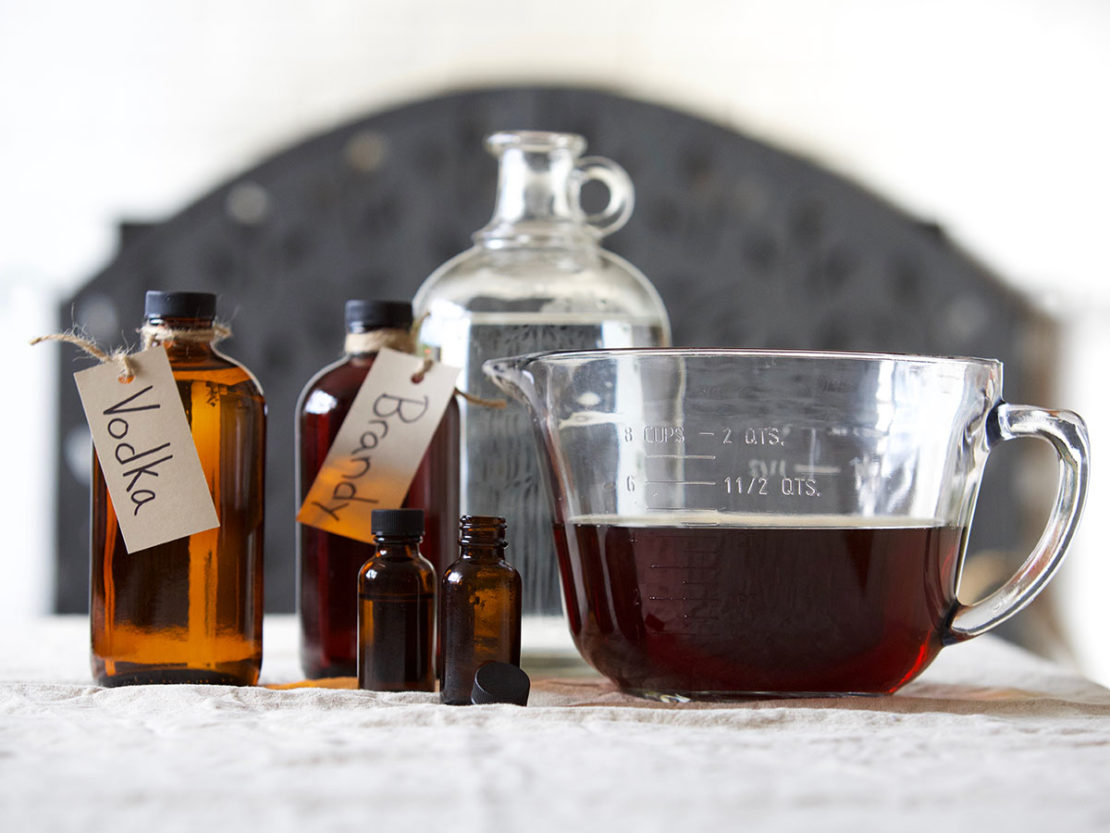
How To Dilute High-Proof Alcohol To Use In Herbal Tinctures
Have you ever prepared to make an herbal tincture and found you were out of your favorite variety of 80-proof or 100-proof tincture-making alcohol?
Did you drive to the nearest liquor store to purchase your tincture-making alcohol of choice so you could make your tincture as planned?
If so, let me save you a trip if you ever find yourself in this situation again. Before you head out the door, you might want to check and see if you have a bottle of high-proof alcohol (the kind you use when making fresh plant tinctures) on hand. If you do, you can easily make do with what you already have.
In this post, I’m going to explain how to dilute high-proof alcohol so you can make herbal tinctures without losing any of the extraction benefits of your favorite variety of tincture-making alcohol. Don’t worry. It’s easier than you think!
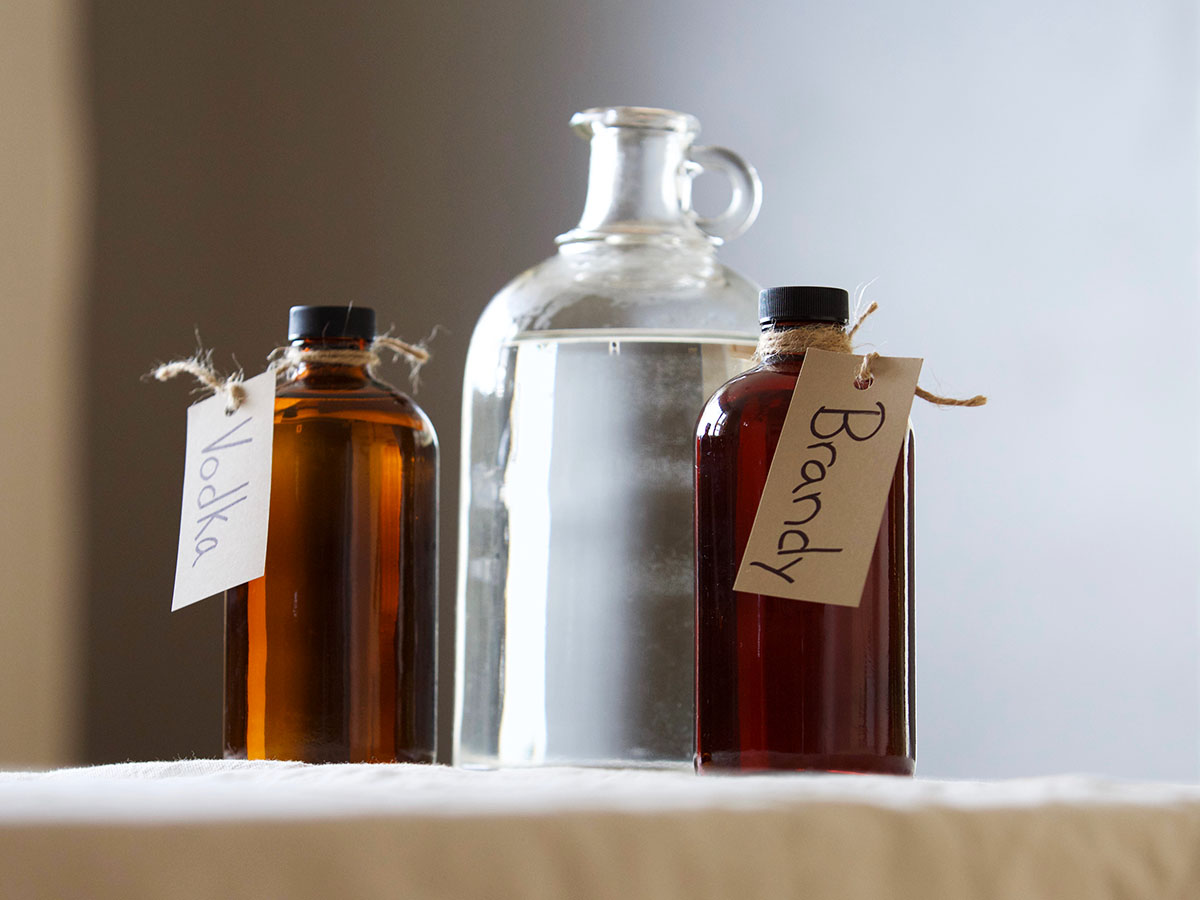
Understanding Water And Alcohol Ratios
For the majority of tinctures made using dried herbs, any type of alcohol (vodka, brandy, whiskey, gin, etc.) that has a 40-50% alcohol content will suffice. These alcohols are readily available and are labeled with the alcohol percentage on the front of the bottle, which is written using the term “proof.”
What this proof tells you is how much of the liquid is pure ethyl alcohol and how much is water. An 80-proof alcohol contains 40% alcohol and 60% water; a 100-proof alcohol contains 50% of each. (To easily figure out the alcohol content of a liquor, simply divide the proof by two.)
Alcohols that are at least 80-proof work well at extracting alcohol and water-based plant constituents as well as preserving the final tincture.
High-proof alcohol, on the other hand, is 95% ethyl alcohol and 5% water and should be labeled with “190-proof” on the front label. High-proof alcohol is mostly used when tincturing fresh plants or when tincturing herbs that need a high amount of alcohol to extract certain plant constituents such as resins, balsams, camphors, volatile oils, alkaloids, glycosides, acrid and bitter principles, and several others (Green, 2000).
However, high-proof alcohol doesn’t have to be reserved for herbal tinctures that require a high percentage of alcohol. It can be used for herbal tinctures that are better suited for low to mid-range alcohol percentages as well. In order to use high-proof alcohol for this purpose, though, you’ll need to dilute high-proof alcohol until you’ve achieved the right alcohol percentage for your tincture.
How To Dilute High-Proof Alcohol
To dilute high-proof alcohol, all you need to do is add distilled water to it. But how much distilled water, you might wonder? Well, that depends on the alcohol percentage you need to extract the desired constituents from your herb.
If you need a tincture with 40% alcohol and your high-proof alcohol is at 95%, you need to dilute it by roughly 55%, which means you need to add 55% water to your high-proof alcohol, resulting in a diluted alcohol that contains just a bit more than 40% alcohol.
The same thing goes if you need a 60% alcohol percentage for a specific tincture. Since high-proof alcohol is already at 95%, you need to dilute it with roughly 35% water to get a diluted alcohol that contains just a bit more than 60% alcohol.
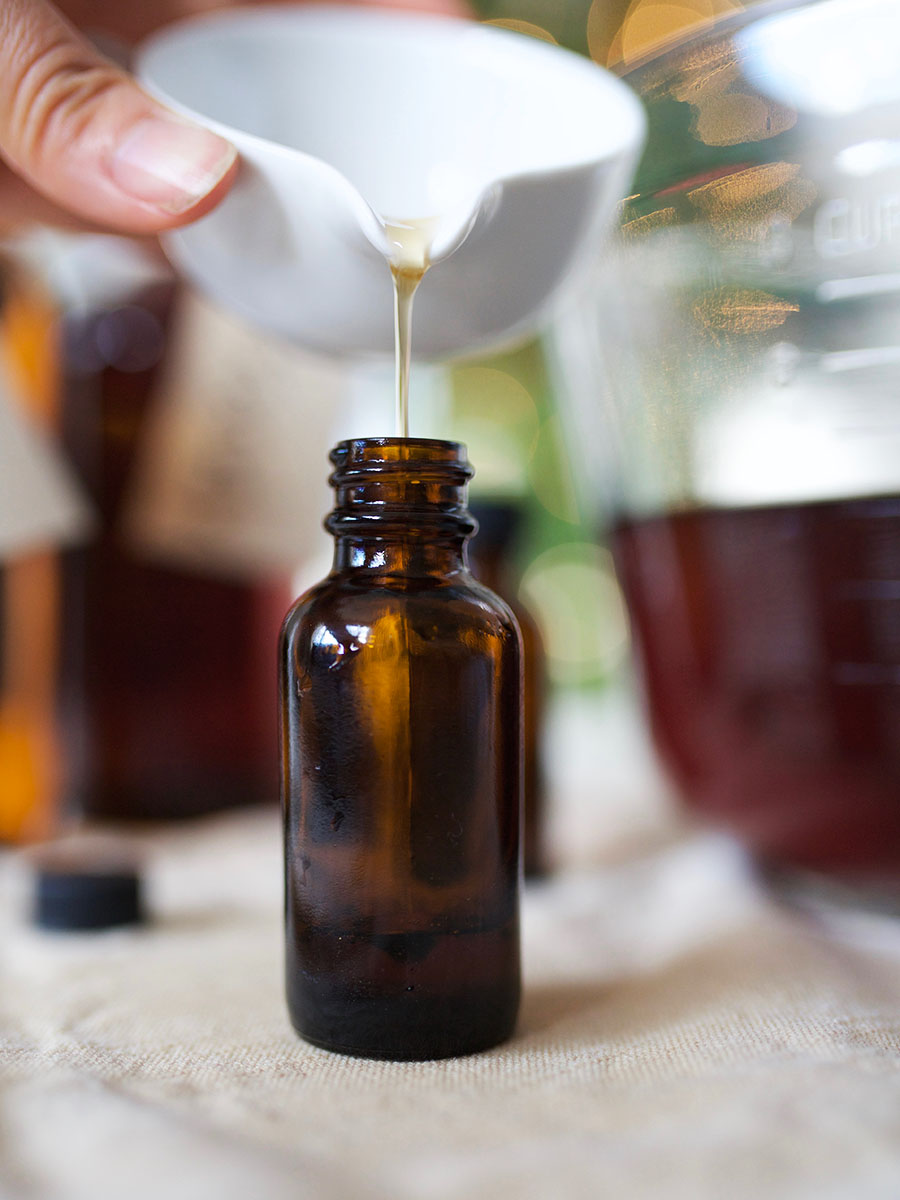
Keeping It Simple
Alcohol distillers have this kind of dilution process down to a science, but seeing how we don’t need to be so precise with our math, we’re going to simplify things as much as we can while trying to stick as closely to the correct measurements as possible.
The simplest way to dilute high-proof alcohol is to measure out the correct amount of alcohol and distilled water separately and then combine them to get the desired alcohol percentage.
To simplify the math, 100 units or parts will be the total volume we are aiming for. The unit or part you use will be up to you. I often use 1 cup to represent every 10 units that I need. That means, in order to get 100 units of liquid, I will need 10 cups total.
Let’s look at some examples.
To do this for a tincture that requires 40% alcohol, if you need 10 cups of menstruum, you would measure out 5 ½ cups of water (55% water) and set this aside. Next, measure out 4 ½ cups of high-proof alcohol (95% alcohol and 5% water). Combine the water and alcohol to get a menstruum that contains approximately 40% alcohol and 60% water. Mix well, and pour this mixture into a labeled mason jar.
Another way to think about this is if you need 100 mL of menstruum, this means you would use 45 mL of high-proof alcohol and 55 mL of distilled water.
To do this for a tincture that requires 75% alcohol, if you need 10 cups of menstruum, you would measure out 2 cups of water (20% water) and set this aside. Next, measure out 8 cups of high-proof alcohol (95% alcohol). Combine the water and alcohol in order to get a 75% alcohol and 25% water mixture. Mix well, and pour into a labeled mason jar.
In this case, if you need 100 mL of menstruum this means you would use 75 mL of high-proof alcohol and 25 mL of distilled water.
In both of the above examples, I’m taking high-proof alcohol and adding distilled water to it in order to dilute the alcohol to a lower percentage. My goal is to get as close to the correct percentage as I can.
For making my own personal homemade tinctures, this method works well as I don’t need the alcohol percentage to be perfectly accurate. However, if I were making tinctures to sell, I’d want to be more precise with my math.
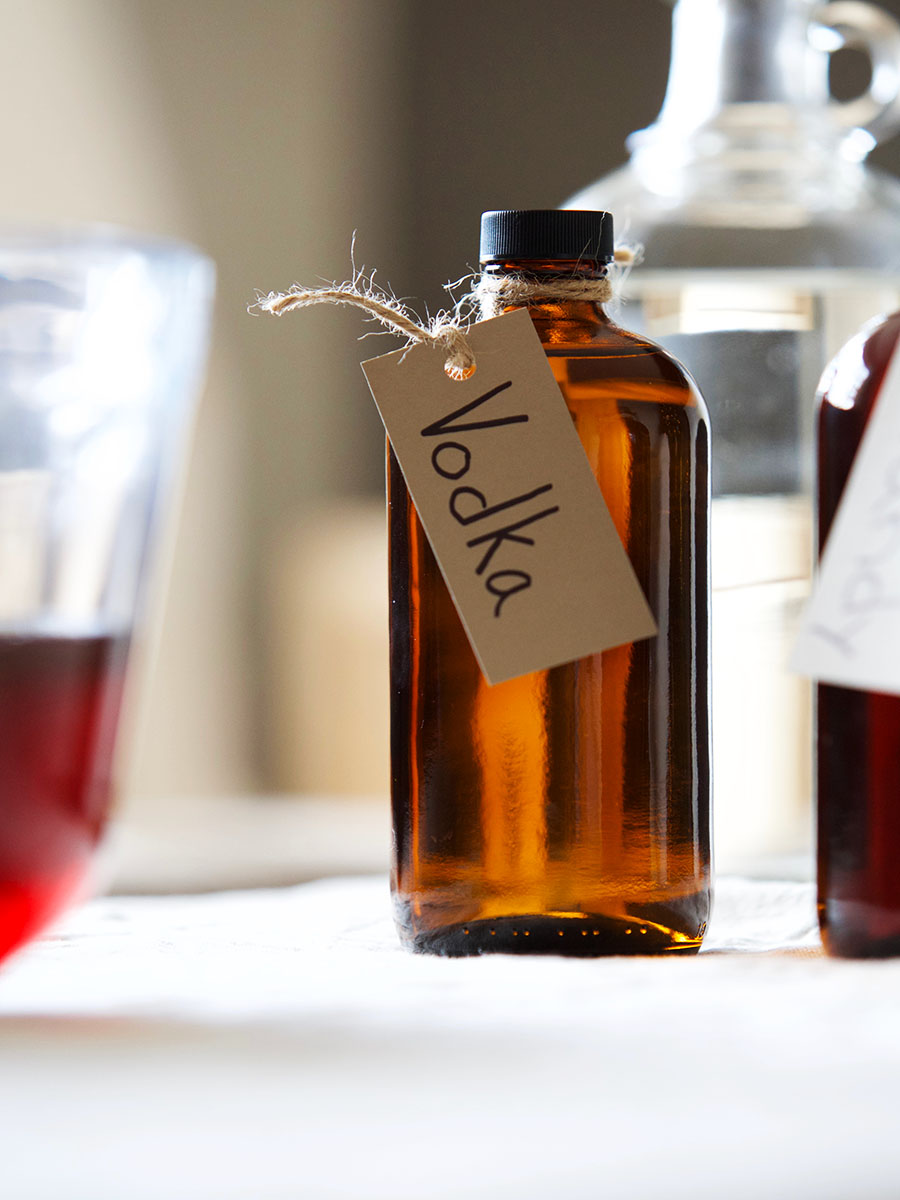
A More Precise Way To Dilute High-Proof Alcohol
In order to get a precise alcohol to water ratio, you can follow a simple formula. Be sure to get your graduated cylinders out because you’ll need them for measuring these exact amounts!
Cech (2000) gives a simple equation to calculate this:
% Spirits needed = (Desired Alcohol % ÷ Alcohol Content of Spirits) ⋇ 100
So if diluting a high-proof alcohol (95%) to 40%, this would look like:
% Spirits needed = (40 ÷ 95) ⋇ 100 = 42.1% alcohol, and the remaining 57.9% would be water.
Let’s try that equation again if we want to achieve a 60% alcohol.
% Spirits needed = (60 ÷ 95) ⋇ 100 = 63.2% alcohol, and the remaining 36.8% would be water.
Making Herbal Tinctures Using A Diluted High-Proof Alcohol
Once you’ve diluted your high-proof alcohol to the right alcohol percentage, you can continue following the steps for making a tincture using either the folk method or the ratio method.
And there you have it. The next time you find yourself out of your favorite variety of alcohol and you really want to make an herbal tincture, you can easily substitute a high-proof alcohol in its place.
This is one of many topics taught in the Herbal Academy’s Intermediate and Entrepreneur level courses. If you’re ready to start or move forward in your herbal journey, let me invite you to check out the Academy’s course offerings and see which one is a fit for you.
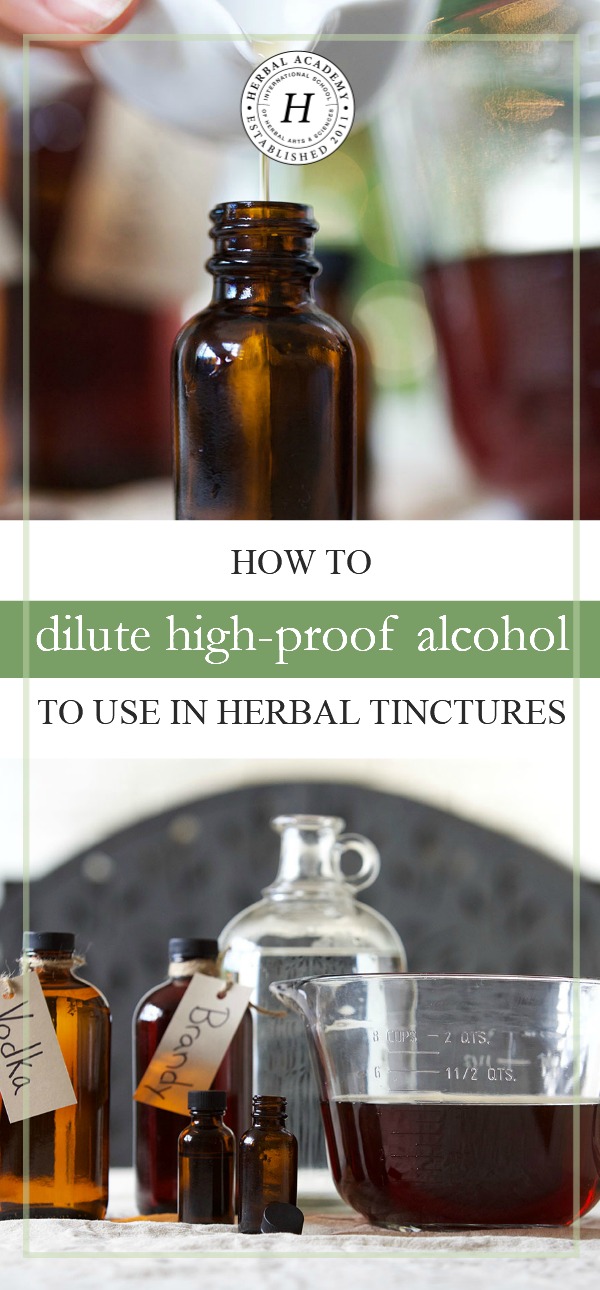
REFERENCES
Cech, R. (2000). Making plant medicine. Williams, OR: Horizon Herbs.
Green, J. (2000). The herbal medicine-maker’s handbook: A home manual. Berkeley, CA: Crossing Press.

